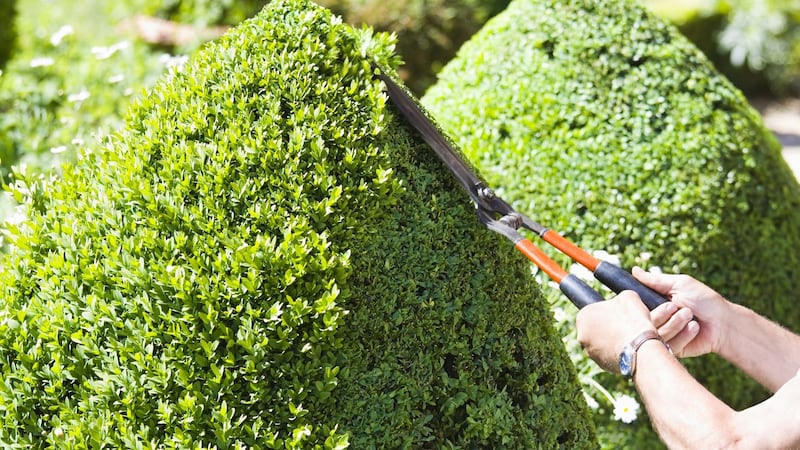My beautiful box hedging has recently started to look a bit unhappy. Parts of the foliage have become patchy with some areas that have turned orange-brown/black or started to drop leaves. A gardening friend told me that it’s almost certainly a disease called box blight and that there’s no cure for it. Should I dig up my plants and replace them with something else?
Your gardening friend is almost certainly correct in diagnosing box blight. A really destructive and disfiguring fungal disease that affects the leaves and stems (but not the roots) of this slow-growing, hardy, elegant evergreen shrub; if left untreated it eventually results in heavily defoliated, unsightly, sickly plants.
When box blight first appeared in Ireland back in the 1990s, the conventional advice was to dig up and burn affected plants but that’s no longer the case. While there’s still no cure, there are ways to effectively manage this plant disease, starting with careful pruning to remove as much of the diseased stems as is reasonable.
Ideally box hedges should only be trimmed once annually, in July. But to revive a badly-afflicted box hedge or box topiary, it’s best to prune it as soon as possible, no matter what the time of year. Pick a dry, bright day and use a sharp, clean secateurs, cutting out the badly diseased parts of the plants after placing an old sheet or towel on the ground to collect all the clippings. To check if the stems are dead, scratch the bark gently. If it’s still green underneath, then it’s still alive so there’s no need to cut it back but if it’s brown, prune it out. It’s also a good idea to gently trim the lower canopy of your box hedge or topiary to reduce the plants’ contact with the ground and thus the risk of reinfection.
READ MORE

Wear gloves and regularly disinfect your secateurs as you work by dipping it into a bucket of water to which you’ve added a little bleach at a rough ratio of 90-95 water: 10-5 bleach.
As the clippings can carry the sticky fungal spores of the disease (these can live in the soil for up to seven years), it’s very important to bag and burn/bin these to prevent them infecting any new, healthy growth. For the same reason as well as to help with air flow (box blight does best in damp, still, enclosed growing conditions), gently shake or brush the branches and then collect any fallen leaves that have collected around the base of the plants.
Gently scraping away the top 2cm-3cm of soil/compost around the roots (bag and dispose this off-site) and then replacing it with an organic mulch will also help a lot to suppress the disease. So will regular use of a good-quality liquid seaweed foliar feed or an organically-acceptable product like Topbuxus (topbuxus.com), both are available from good garden centres. These should be used monthly from March-November and applied on a dry, bright day. Not only do these both have powerful anti-fungal properties, but they will also nourish your box hedge which also really helps these greedy plants to stay healthy and vigorous. These liquid foliar sprays aside, always water your box plants at ground level to avoid wetting the leaves and creating conditions favourable to the spread of the disease.













